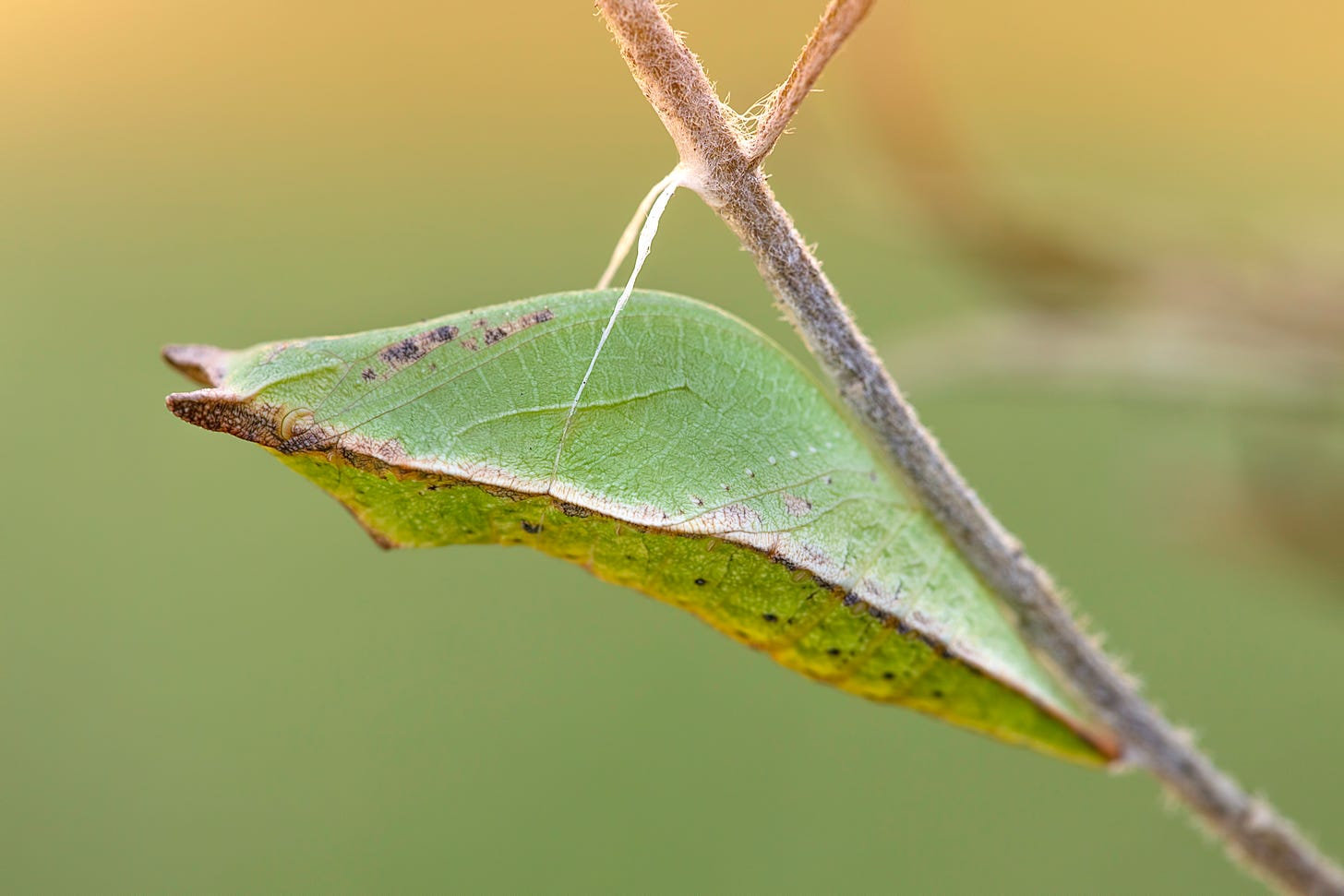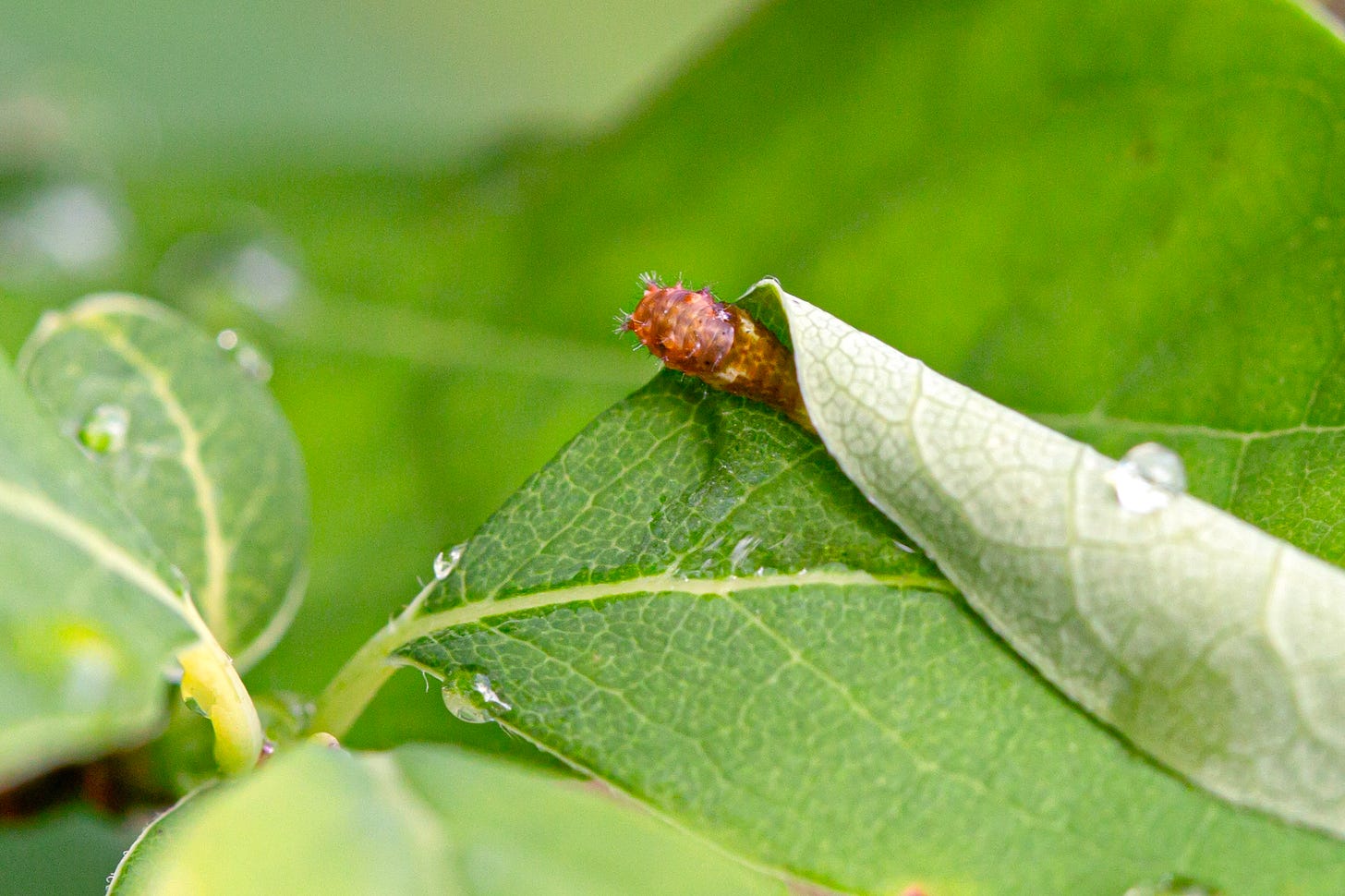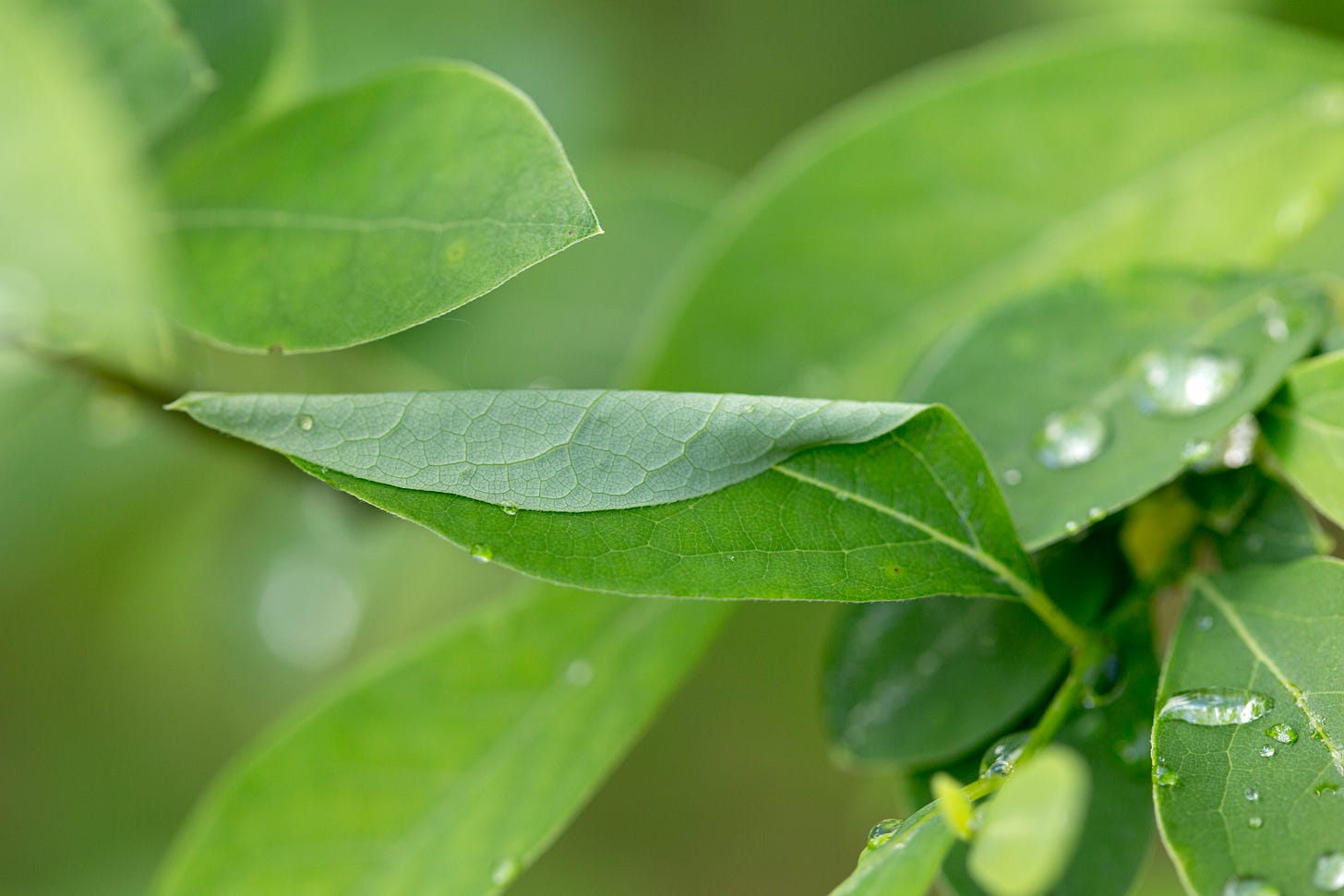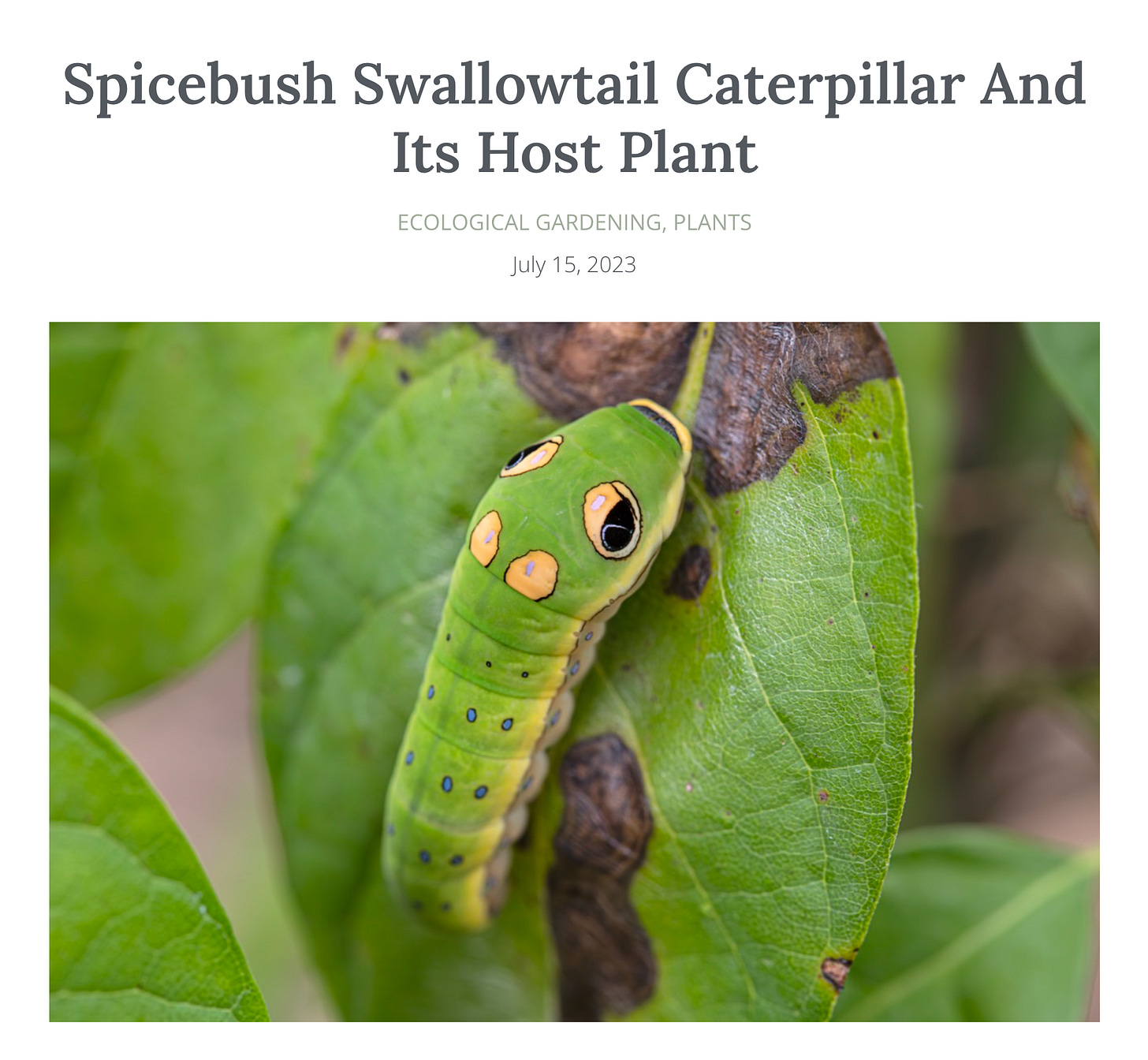The Return of the Spicebush Swallowtails!
How this native host plant draws in caterpillars that look like a Pokemon
Exactly one year ago, in the first week of May, I was photographing Spicebush Swallowtail caterpillars in my garden. This year? They showed up right on schedule around May 7th again. Well, that’s when I noticed them anyway. They hatched from their eggs days ago and it wasn’t that long ago that I spotted the momma butterfly laying those eggs on the leaves.
But here they are, back in the garden like they have been every year since we planted two native spicebush (Lindera benzoin) plants several years ago. We added these plants specifically because they are a native plant that serves as the host for this amazing caterpillar.
They have a fascinating lifecycle and unique forms of mimicry where they’ve adapted false eyes that make them look like a small snake. They remind me of the Pokemon Caterpie, which is technically based on the Eastern tiger swallowtail caterpillar, but still. It’s close.

The tell-tale sign that the caterpillars are here is seeing the leaves curled over like in the photo below. Their leaf rolling mechanism is one of those amazing feats of natural engineering that’s also so simple. The caterpillar attaches threads of silk to the leaf on either side mid-vein and as the silk dries it pulls the leaf around the caterpillar.
You can unfurl the leaf with your fingers to peak in at the caterpillar and the leaf folds right back.


Why This Matters
The presence of Spicebush Swallowtails in the garden is just one example of native plants doing what they’ve done for thousands of years: offering food, shelter, and a place for wildlife to grow.
Spicebush (Lindera benzoin) and the swallowtails that rely on it evolved together. Much like the relationship of milkweed and the Monarch butterfly.
Without this host plant, these caterpillars have nowhere to go in my garden. So when we plant native species in our own yards, we’re not just gardening, we’re facilitating relationships between plants and pollinators that have been disrupted by turf grass, pesticides, and non-native ornamentals.
One of the most rewarding ways I have found to support all kinds of life in the garden is by adding host plants.
I’ve written more in-depth about the spicebush caterpillars and their relationship with the spicebush plant over on my website here, including how to support them in your own garden and photos of the various stages including pupation.





